Colorado draws about 84 million tourists a year. Certainly, the state has some of the most beautiful wild, natural landscapes of any part of the United States. It also has cities with modern conveniences, yet deeply rooted in the history of the state and the nation. In this article, we’ll explore some of the oldest cities in Colorado, when they were founded, and what you can do there today.

At the mention of “Colorado,” images of natural wonder like this might be the first that come to mind.
©Virrage Images/Shutterstock.com
A Brief Primer In Colorado History
Colorado was once home to many different native American nations. These include the Ute, Cheyenne, Arapaho, Apache, Shoshone, Comanche, Kiowa, and Navajo. The area along the foothills of the Rocky Mountains was a major migration route for native Americans. They resided here for thousands of years before European settlers arrived in the area. In 1694, Spanish explorers were the first Europeans to reach the area. They named it “Colorado” meaning “the color red” in Spanish. The name referenced the red rock formations and the red sediment the Colorado River washed down from the mountains. When Mexico became independent in 1821, the administration of Colorado transferred to them. The United States acquired it in 1848. This land included a vast tract of territory from California and the entire present Southwestern United States. Colorado achieved full statehood in 1876.
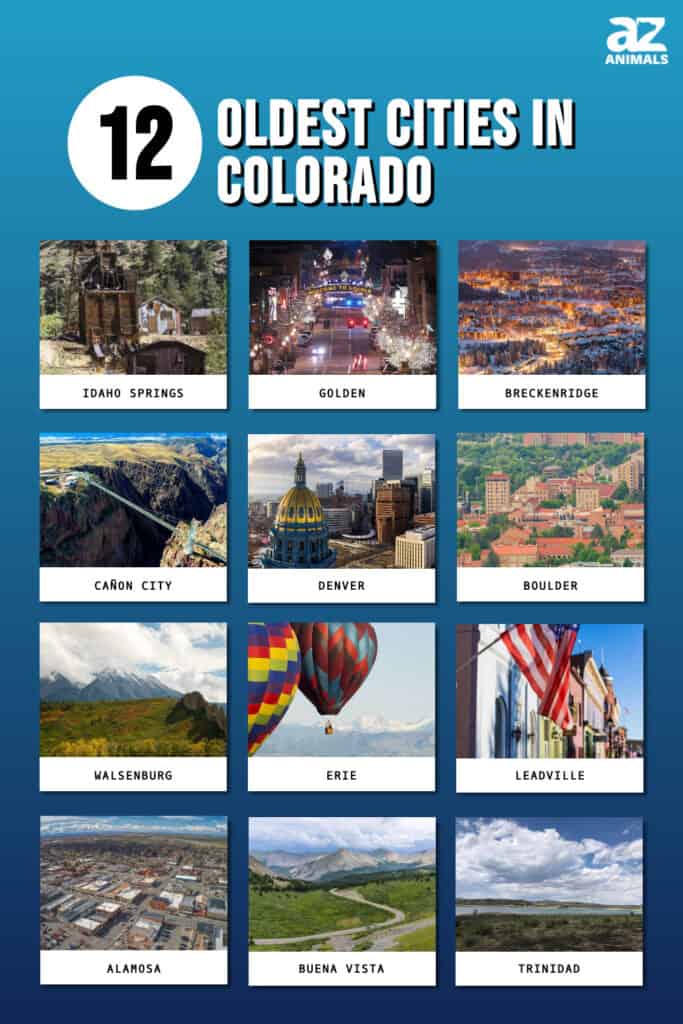
The 12 Oldest Cities In Colorado
It’s debatable how big a settlement has to be in order to be considered a “city,” but in many parts of the United States, 1,500 people is considered a minimum. In the American West boomtowns sometimes grew considerably larger than that, particularly when gold or other minerals were discovered, then faded into ghost towns when the mines played out. But in this article, we want to point you toward cities that are still populated. So below are the oldest cities in Colorado that still have a population of at least 1,500 people today, arranged by their date of founding. Enjoy learning a little history, and what you can do in these interesting places today!
1. Idaho Springs, 1859
With a current population of 1,717, Idaho Springs was founded on April 17, 1859 by prospectors during the Pike’s Peak Gold Rush. It was the site of the first substantial gold discovery in the state. Prospector George A. Jackson noticed the area when he saw clouds of steam rising from nearby hot springs and a large number of wild mountain sheep grazing in the area. Panning in the nearby stream, Jackson and a team of 22 miners brought in $1,900 in placer gold in the first week; the equivalent of over a million dollars today.
After the gold played out, Idaho Springs faded until the construction of the Interstate highway system in the 1950s and 60s. The town began to develop into a tourist center. The center of the town is now the historic district, with tourist-related business to the east and residential areas to the west. It’s also home to many people who work at Loveland Ski Area further up the canyon. If you visit, you can still enjoy soaking in the famous hot springs yourself, as the Native Americans and the miners did long ago.
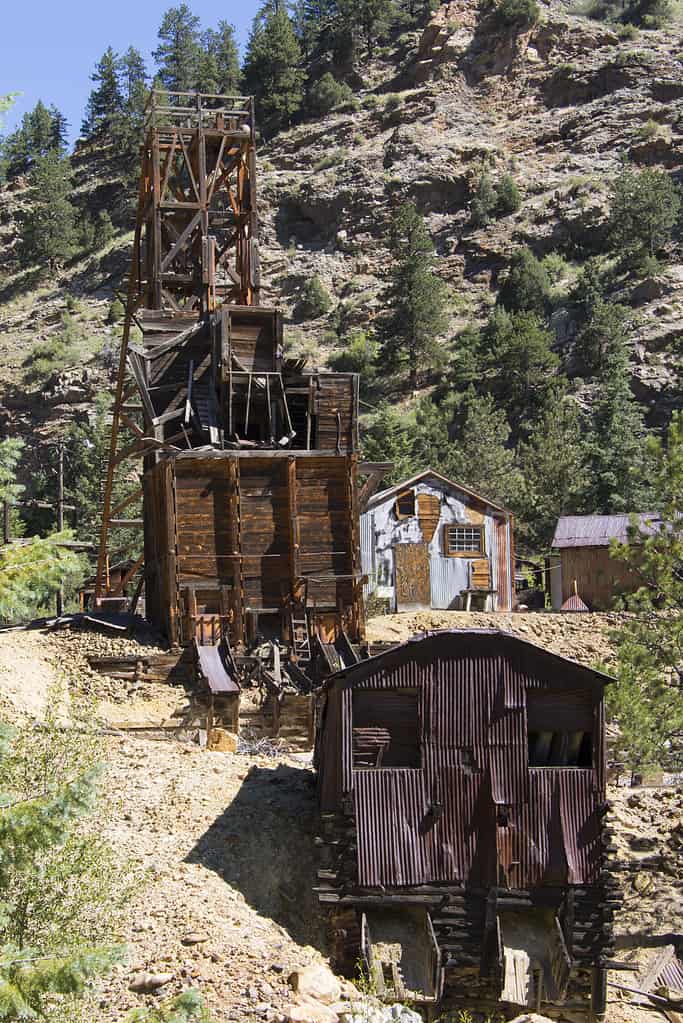
Near Idaho Springs you can still see original structures from the mining operations of the Colorado gold rush of 1859.
©Images by Dr. Alan Lipkin/Shutterstock.com
2. Golden, 1859
Golden Colorado was founded along Clear Creek on June 16, 1859, during the gold rush. It was geographically well-positioned as a trade center between the western gold fields and settlements further east. It was originally the territorial capital but fell behind and lost its status as Denver was able to get connected to the emerging railroad system first, exceeded Golden’s growth, and eventually became the capital of Colorado.
One of the modern attractions of Golden is its beer culture. It is the headquarters for Coors Beer and hosts several microbreweries as well. If you want to sample them yourself, you can attend the UllrGrass beer festival in January or the Knock Your Boots Off Beer Tasting and Chilli Cook-off in October. If you prefer high culture, Golden is still for you. The city has numerous specialty museums, the Jefferson Symphony Orchestra, and the Golden Fine Arts Festival in August.

Downtown Golden, Colorado, brightly lit for the Christmas holidays season.
©Virrage Images/Shutterstock.com
3. Breckenridge, 1859
Founded in November 1859, this city was named for prospector Thomas Breckenridge. It was established as part of the Pike’s Peak Gold Rush that year and served the prospectors working claims on the Blue River. Before the mines were exhausted, the Breckenridge mining district produced about 1 million ounces of gold, worth nearly $2 billion at today’s prices.
Now Breckenridge has a population of over 5,000 but also a lot of part-time residents as it is a popular location for vacation homes. Ski trails were first set up in the area in 1961 and ever since it’s been one of the most attractive ski locations in the state. In the warm months, people come to enjoy hiking, mountain biking, boating, fishing, white water rafting, and more. The town has a roller coaster for the kids and historic buildings and charming shops along Main Street. Annual film festivals in January and September and a Fourth of July parade attract large numbers of locals and tourists.
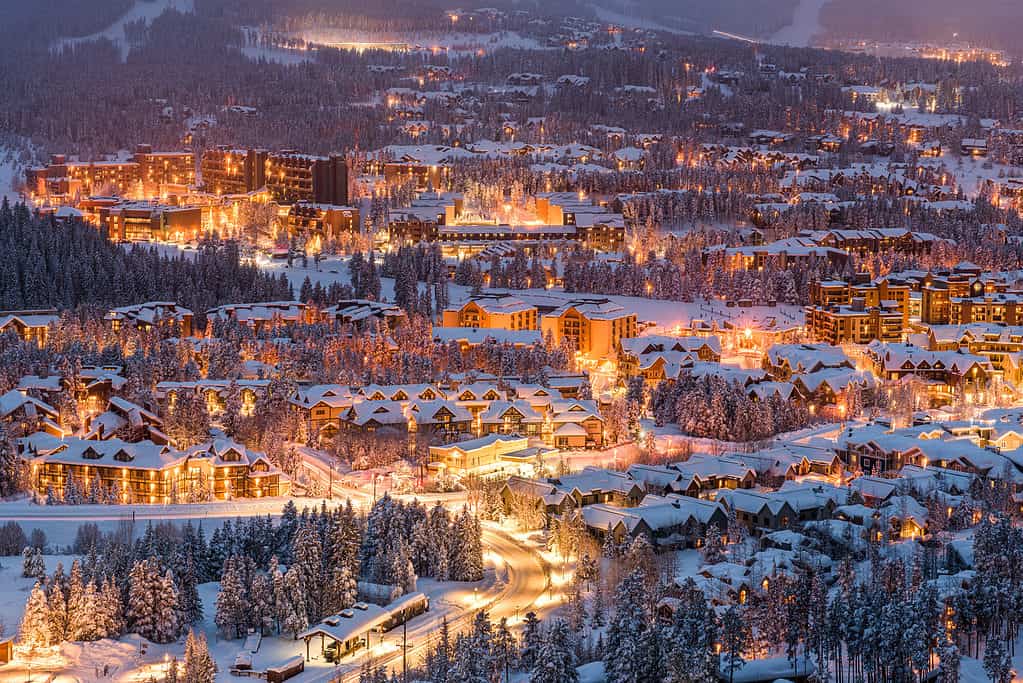
Breckenridge, Colorado is a popular ski resort city today. Many people own vacation homes there.
©iStock.com/Sean Pavone
4. Cañon City, 1860
Cañon City, founded in 1860, began as a location to excavate mineral deposits in the area. As it turns out, it became the site of the first commercial oil well west of the Mississippi River. It was also the site of several metal ore smelters serving the area. The town was originally called Canyon City but in 1994 the U.S. Board on Geographic Names approved adding a tilde to the “n” and dropping the “y” to make this one of the only U.S. cities to have the Spanish ñ in its name.
A magnificent natural feature of the area is the Royal Gorge, a 10-mile-long granite-walled canyon carved by the Arkansas River. It helps make Cañon City today a popular destination for rock climbers and fossil hunters, as a number of significant discoveries have been made in the area. Whitewater rafting and hiking the extensive trails of the area are also local attractions. Today, 17,141 people call Cañon City home.

The Royal Gorge Bridge in Cañon City, Colorado will give you a dizzying view of this stupendous natural wonder.
©Inbound Horizons/Shutterstock.com
5. Denver, 1861
Denver, the state capital, is both the oldest and largest city in Colorado. It was founded November 7, 1861. Because of its elevation exactly one mile above sea level, it has been nicknamed the “Mile High City.” Like many other cities on our list, it was a supply depot for miners headed to the mountains in search of gold and other precious metals. Unlike most of them, however, it developed a strong industrial base and became the most desirable place in the state for wealthy gold barons and industrialists to spend their money on expensive hotels, restaurants, and luxury homes.
Denver today has a growing population of 715,522, which is an increase of almost 20% since 2010. In recent years, large numbers of people have moved to the area from Southern California, fleeing the crowding and high cost of living there. In 2016, U.S. News & World Report named it the best place to live in the United States. Its semi-arid climate is especially attractive to tourists and residents who enjoy outdoor activities in a sunny place with little rain, a change of seasons, and generally mild weather.
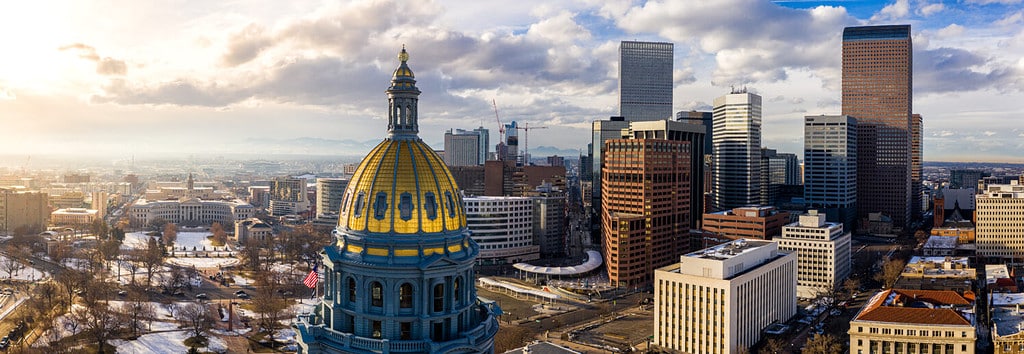
Denver is a fast-growing city, popular for its sunny, arid climate and variety of indoor and outdoor activities.
©Nicholas Courtney/Shutterstock.com
6. Boulder, 1871
Boulder, Colorado is the 12th largest city in the state with 108,250 people. It was incorporated on November 4, 1871, as a logistical support center. Miners headed to the mountains to try their luck could find housing and transport services, foodstuffs, mining equipment and of course saloons for gambling, drinking, and other entertainment.
Boulder has left its racy reputation in the history books and now offers visitors entertainment for the whole family, such as museums, libraries, bike and skate parks, and of course, nearby skiing. If you happen to be in the market for a college, the University of Colorado has a branch in Boulder. Hey, it’s a great reason to move to beautiful Colorado and just . . . never leave!
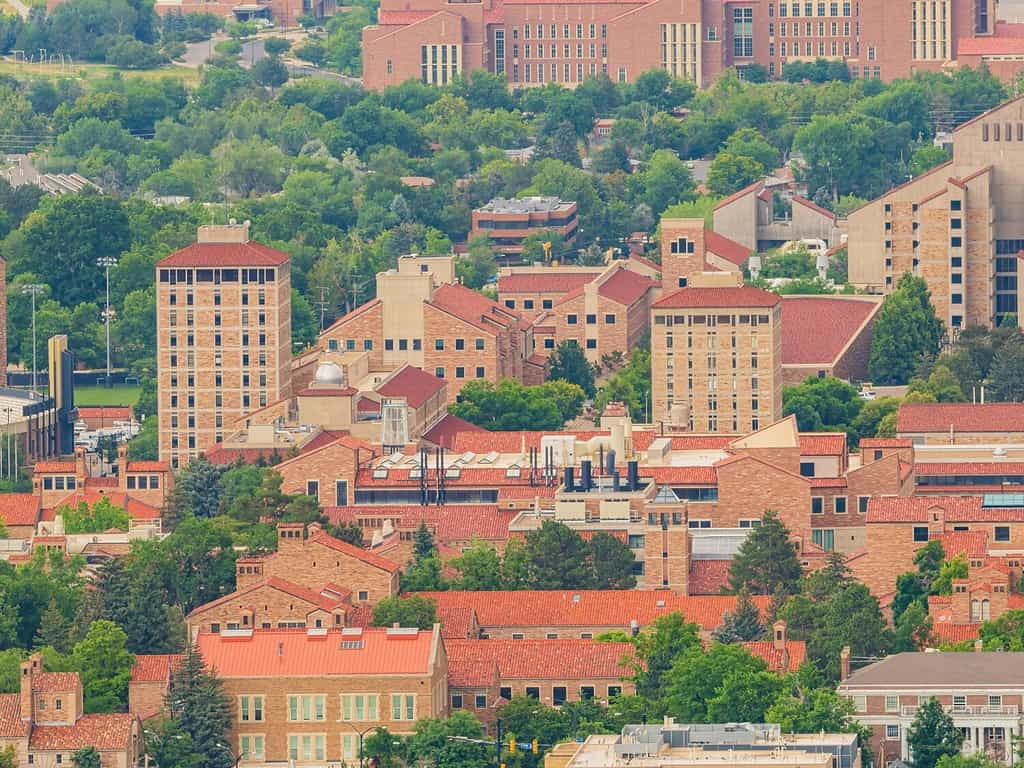
Looking for a reason to move to Colorado? Maybe enroll at the University of Colorado, Boulder.
©Kit Leong/Shutterstock.com
7. Walsenburg, 1873
Walsenburg got started on June 16, 1873, and today numbers 3,049 people. One of its claims to fame is that Robert Ford, who killed the outlaw Jesse James, started a saloon and gambling house there. The town also played a key role in the 1913-14 Colorado Coalfield War, a violent miners’ strike as a result of dangerous and abusive mining conditions.
This part of Colorado has a semi-arid climate, with little to moderate rainfall. Lathrop State Park is located just 2 miles away. Nearby lakes are available for fishing, water skiing, boating, and jet skiing. You can also hike or camp, and this is the only state park in Colorado offering a golf course. The city also has its own year-round 9-hole public golf course and a water park. Ten miles southwest are the Spanish Peaks, a national landmark that has been described as one of Colorado’s “Seven Wonders.”

The Spanish Peaks are a spectacular site near Walsenburg, one of the oldest cities in Colorado.
©Brent Coulter/Shutterstock.com
8. Erie, 1874
Erie might belong earlier on our list, as was settled and named in 1864 but not officially incorporated until November 16, 1874. It was named after Erie, Pennsylvania, the hometown of an early settler. Its 2020 population was 30,038, which is a whopping 65.6% increase over 10 years! No doubt a big reason for this is its convenient location, 30 minutes or less to both Denver and Boulder. Erie made its fortune as a coal-mining town with access to the railroad so it could get its product to market.
Erie is a popular center of the arts, with over 100 active artists in town. Artists support one another through the Arts Coalition of Erie, which operates the Art Center of Erie. Many local artists display their work at the Erie Community Center and High Plains Library. One of the most interesting local events to witness is the Erie Town Fair and Balloon Festival which happens every May. You’ll find over 200 vendors, live entertainment, and sunrise hot air balloon launches. It’s truly an impressive event.

Erie, Colorado’s annual balloon festival is doubly spectacular against the background scenery of the Rocky Mountains.
©Arina P Habich/Shutterstock.com
9. Leadville, 1878
2,600 people call Leadville home. It was officially incorporated on February 18, 1878. Leadville is actually the second founding of an older city. It was originally called Oro City in 1859. It was a gold mining boomtown until miners realized there was more silver and lead in the area than gold. After they abandoned Oro Ciy, a new group of settlers came in and reestablished the city as “Leadville” in 1878.
Leadville today is a really interesting place to visit, especially for its interesting architecture. Many early houses are still there. They have been repainted in an astonishing rainbow of colors, as have the downtown shops. (Check out the “Happy Hippie Tie Dye House,” for example). You’ll find plenty of opportunities to learn about the history of this genuine wild west mining town. At over 10,000 feet above sea level, it is the highest incorporated city in the United States. Visitors will want to brush up on symptoms of altitude sickness and prepare yourself properly. Mountain climbers will appreciate that Colorado’s two tallest “fourteeners” are in the area: 14,433-foot Mt. Elbert and 14,421-foot Mt. Massive.
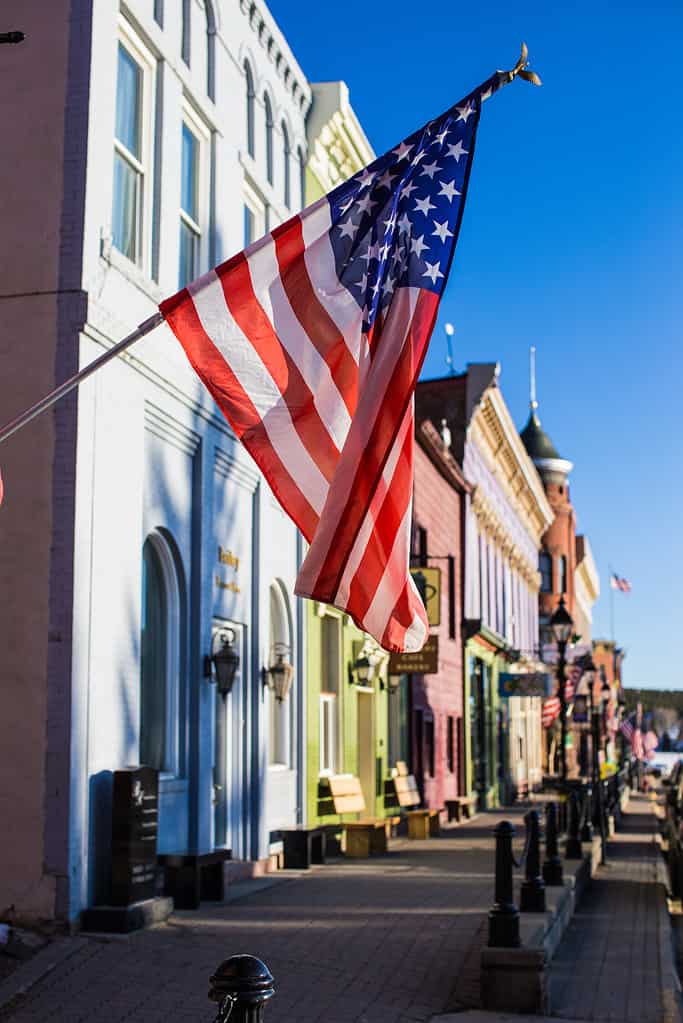
Many of the historic homes and downtown shops in Leadville are painted in eclectic colors.
©Jonas Tufvesson/Shutterstock.com
10. Alamosa, 1878
Alamosa, founded August 30, 1878, now is home to 9,800 Coloradans. It was established by the Denver and Rio Grande Railroad. It developed into a major rail transportation center, with rail construction, repair, and shipping facilities. The city’s name comes from a Spanish word describing cottonwood since the area had extensive cottonwood forests.
Alamosa is a significant tourist area now, with several interesting attractions nearby. These include the Great Sand Dunes National Park and Preserve, Colorado Gators Reptile Park and the Rio Grande Scenic Railroad. On the first weekend in June, you can take part in the “Summer Fest on the Rio.” On Labor Day weekend the city hosts the Early Iron car show. If you visit on a weekend in the summer, you might catch “Weekends on the Rio.” This festival occurs several Sundays each summer.
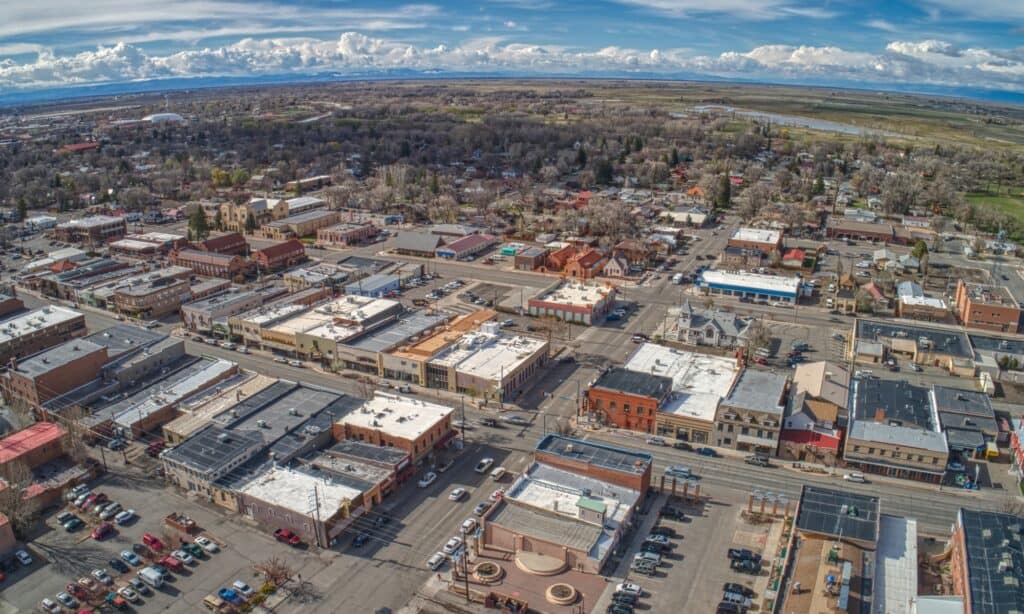
Alamosa got its start as a major rail center for one of Colorado’s railroad companies.
©iStock.com/Jacob Boomsma
11. Buena Vista, 1879
The name “Buena Vista” is Spanish for “good view.” If you visit and want to sound like a local, Americanize the pronunciation of the name to “Byoo-na Vista,” or simply “BV.” It’s a city of 2,855 people located halfway between Salida and Leadville. The city was incorporated on November 8, 1879, and many of the buildings in the city date back to its early decades in the 1880s and 1890s. Unlike so many other early Colorado cities that were founded because of the mining industry, Buena Vista attracted settlers because the plentiful water supply there made it a good place to start farms. The agricultural basis of its economy has helped it survive when so many of the boomtowns that began in that era went bust as the mines were played out.
Though it’s a small town – or perhaps because it’s a small town – Buena Vista is a preferred destination for camping, hiking, rock climbing, whitewater rafting, and off-roading. It has hot springs and a reservoir nearby. And it lives up to its name, offering a “good view” in practically any direction you care to explore. Be sure to check out Cottonwood Pass (see picture below).

A panoramic view of a mountain road at Cottonwood Pass, Buena Vista.
©iStock.com/SeanXu
12. Trinidad, 1879
Trinidad is in Southern Colorado, just 21 miles from the New Mexico border. It began to be settled in 1862 but was officially incorporated as a city on December 30, 1879, and lies on the historic Santa Fe Trail. Coal deposits were the attraction for settling Trinidad. It was later fortunate enough to be on the rail line, which was often the key factor in whether a Colorado town would survive or die. These days, it is located on the most-traveled highway between Colorado and New Mexico and is home to 8,300 people.
Since the 1960s, it has developed a reputation as a magnet for people with socially progressive ideas. It was the location of a famous hippie commune, an early center for gender reassignment surgery, and an early adopter of liberal marijuana policies. Today it’s home to art galleries, museums, and trendy coffee shops. There’s no shortage of natural beauty and outdoor activities you can enjoy. Don’t miss Commanche National Grassland, a 430,000-acre prairie.
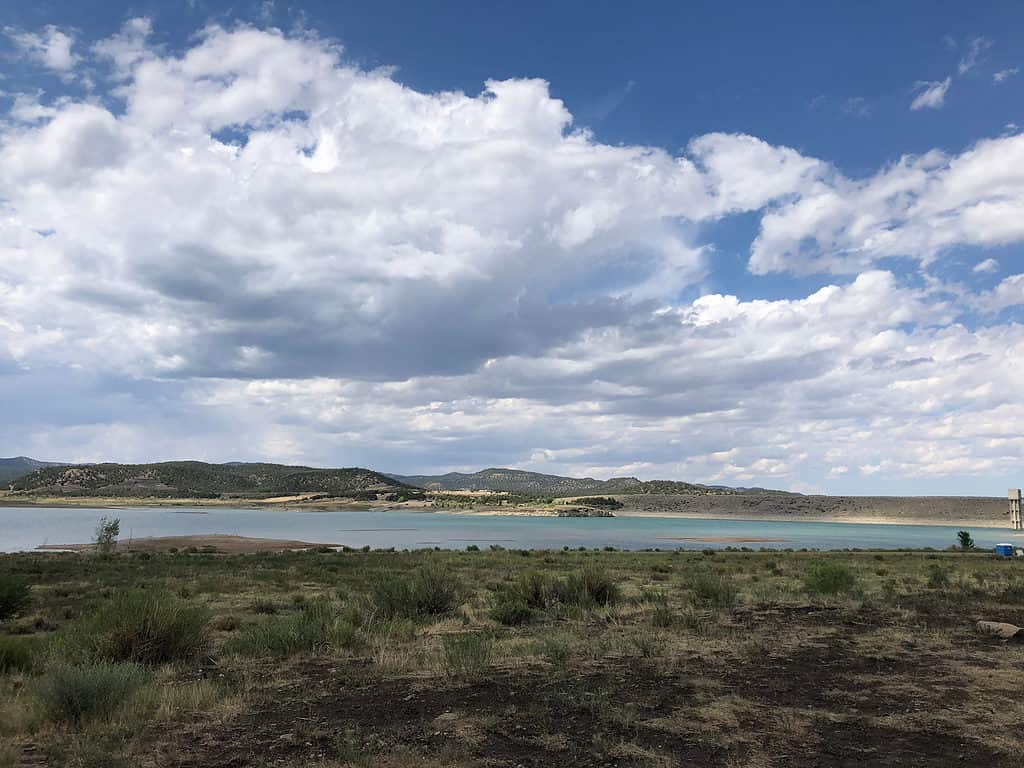
Lake Trinidad in Trinidad, Colorado. Located on the Santa Fe Trail, this area has lots of history and is close to Commanche National Grassland.
©Maysweetheart7/Shutterstock.com
Wrap Up
So that’s our list of some of the oldest cities in Colorado. As you can tell, the history of these cities and of the state of Colorado itself has been closely tied to the exploitation of natural resources. Fortunately, today a major part of Colorado’s revenue comes from people who want to enjoy unspoiled natural beauty. This is a major boon not only to the state economy but to its wildlife too. One thing’s for sure – you can’t go wrong visiting any of these cities, as they are all rich in history, natural beauty, and interesting entertainment and activities. And the same nice weather and temperate climate that draws so many people to choose Colorado as their home makes the state an ideal vacation spot for visitors from around the country and the world. So now it’s time to plan your next trip to Colorado!
Summary of 12 of the Oldest Cities In Colorado
| Rank | City | Date Incorporated |
|---|---|---|
| 1 | Idaho Springs | 1859 |
| 2 | Golden | 1859 |
| 3 | Breckenridge | 1859 |
| 4 | Cañon City | 1860 |
| 5 | Denver | 1861 |
| 6 | Boulder | 1871 |
| 7 | Walsenburg | 1873 |
| 8 | Erie | 1874 |
| 9 | Leadville | 1878 |
| 10 | Alamosa | 1878 |
| 11 | Buena Vista | 1879 |
| 12 | Trinidad | 1879 |
The photo featured at the top of this post is © Alexander Lukatskiy/Shutterstock.com
Thank you for reading! Have some feedback for us? Contact the AZ Animals editorial team.






